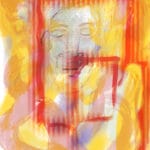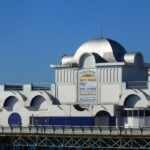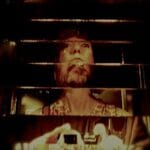I’ve heard of thousand dollar bottles, dug from a Napoleonic cellars over which a shopping mall was soon to rise.
The thing about expensive wine, by which I mean wine that costs more than $200 a bottle, is that I can’t imagine anybody slooshing its dregs down the sink at the end of an evening.
To my mind, $10 worth of Château De Plume du Plom at the bottom of a glass heading for the waste disposal of a stainless steel kitchen sink is an image of pure sadness.
Of course, wealth, real wealth is all about surplus. It’s not about what you keep; it’s about what you can afford to throw away without a second glance. The after-thought boys might chipping the crystal the enforced guests might be gurning over the latest piece of art, their fingers stained with labour about the stain the frame, but the wine doesn’t get a thought.
I’ve heard of thousand dollar bottles, dug from Napoleonic cellars over which a shopping mall was soon to rise. A thousand dollar bottle of plonk? How? Do you drink it? Do you share it with friends or save it for yourself? Is anybody rich enough to slob out on the couch, dressed in silk boxer shorts, crackling sea-salt and basil-flavoured fried oyster snacks down their fronts watching bad television and drinking the thousand dollar bottle in $50 swigs straight from the bottleneck?
This is what I was thinking as I looked out into the bright rain from the sweated front seat of a cab that I could barely afford, heading down the Paramatta Road in Sydney, Australia. My driver was a German who looked frighteningly like my maternal grandfather. So I immediately assumed that he was a gutter-bastard with no concerns for humanity other than how they were getting at him.
“You are Australian?”, he asked without moving his gaze from the bus in front?
“No, I’m English.”
“Did you find it easy to get into Australia?” His head was gently spiked with a fine blond crew cut, his eyebrows were translucent and I could see no other evidence of hair aside from the tufts that came like tendrils out of his ears – showing him to be at least sixty years old.
“Not really, not a problem, no.” I wanted to continue my train of thought, to work out why my visions of wealth had ended up sprawled alone in a room watching television.
“It was hell for me, forty years ago, so much paper, so many problems. Not like these Asians today coming in like drones. The drugs and the gangs now. Sydney is not like when I was first here.” He smiled and finally looked at me as we waited at the lights that turned the Paramatta Road into Broadway. It was a genuine smile, one that begged me to agree with him. Had I been in another mood, I might have forgiven him the tattered rhetoric and predictable spew that had already turned my day into a cliché. I would have looked into his speech and discovered a man with a past, and a few bricks to build a safe house in a confusing world. That day, however, I was in no mood for it. I needed a fresh day – a fresh afternoon at least, it was already two o’clock in the afternoon – and here I was mired in rain and a cabbie who could have come straight out of a left-wing agit-prop production.
“The reason I found it so easy to get in was that I flew in from Timor under cover of darkness last Tuesday. It’s simple if you know the right people. I paid about $10,000 US and had some papers forged by a man I know in Bali. The problem with these other queue jumpers is that they don’t have any style. No flair.”
“And too many children! The fucking Asians!” His smile had broadened and I thought for a moment that he was going to try and shake my hand. Maybe he’d got the gist that I was joshing him, or maybe he was simply so bitter that it didn’t matter. Either way, we were edging towards the lights that turned Broadway into George Street, just in front of the Central Station Bus depot and, looking at the meter, it was my time to get out.
As I left him, his smile reframed itself to a blank stare – no tip – and he headed off into the CBD. I was standing at the small crossroads that lead down into Quay Street, on into the Exhibition Centre and down to Darling Harbour or straight on to George Street. Quay Street – Sydney’s plaguey, rum-roasted past sliced back into sanitary futurism.
I decided instead to head into the crumbly, up and coming, old fashioned main street. George Street is bullied by an architectural gangbang where the old Empire arrogances of thick rock “establishments” more fitting of Manchester or Liverpool or Leeds battle it out with rorted high rises to shame the venerable old thoroughfare into their way of life.
I had arrived into the morning.





